Damien Kelly
Mobile Computational Photography: A Tour
Mar 10, 2021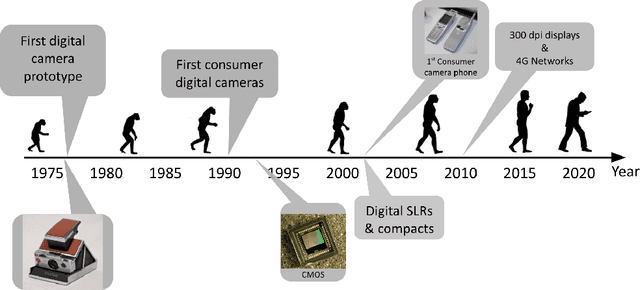

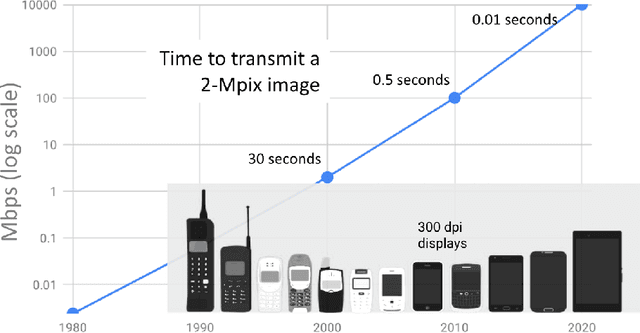
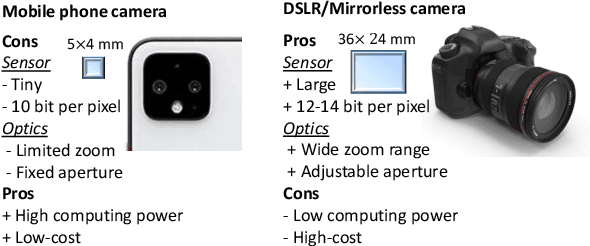
Abstract:The first mobile camera phone was sold only 20 years ago, when taking pictures with one's phone was an oddity, and sharing pictures online was unheard of. Today, the smartphone is more camera than phone. How did this happen? This transformation was enabled by advances in computational photography -the science and engineering of making great images from small form factor, mobile cameras. Modern algorithmic and computing advances, including machine learning, have changed the rules of photography, bringing to it new modes of capture, post-processing, storage, and sharing. In this paper, we give a brief history of mobile computational photography and describe some of the key technological components, including burst photography, noise reduction, and super-resolution. At each step, we may draw naive parallels to the human visual system.
Polyblur: Removing mild blur by polynomial reblurring
Dec 16, 2020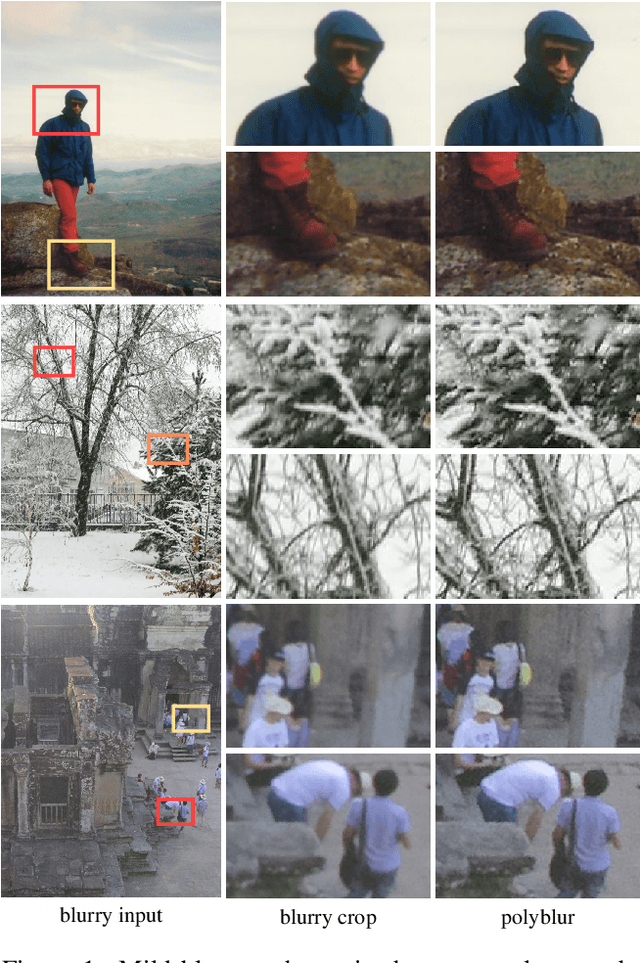



Abstract:We present a highly efficient blind restoration method to remove mild blur in natural images. Contrary to the mainstream, we focus on removing slight blur that is often present, damaging image quality and commonly generated by small out-of-focus, lens blur, or slight camera motion. The proposed algorithm first estimates image blur and then compensates for it by combining multiple applications of the estimated blur in a principled way. To estimate blur we introduce a simple yet robust algorithm based on empirical observations about the distribution of the gradient in sharp natural images. Our experiments show that, in the context of mild blur, the proposed method outperforms traditional and modern blind deblurring methods and runs in a fraction of the time. Our method can be used to blindly correct blur before applying off-the-shelf deep super-resolution methods leading to superior results than other highly complex and computationally demanding techniques. The proposed method estimates and removes mild blur from a 12MP image on a modern mobile phone in a fraction of a second.
Learning to Reduce Defocus Blur by Realistically Modeling Dual-Pixel Data
Dec 06, 2020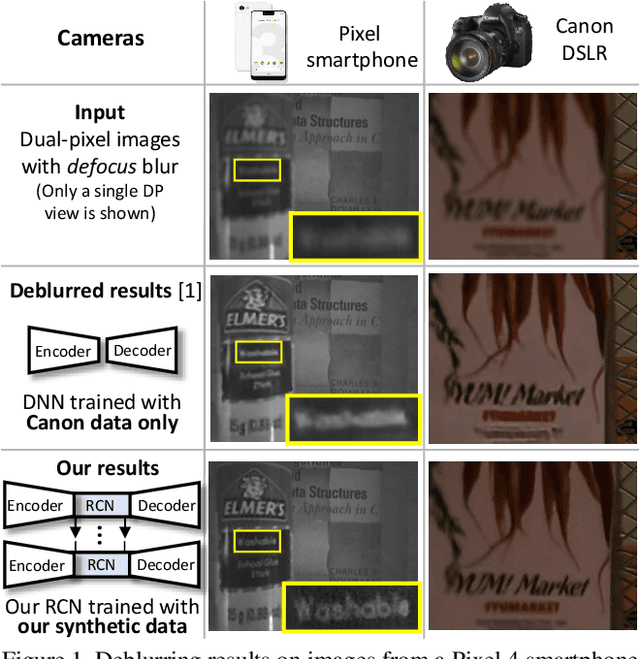



Abstract:Recent work has shown impressive results on data-driven defocus deblurring using the two-image views available on modern dual-pixel (DP) sensors. One significant challenge in this line of research is access to DP data. Despite many cameras having DP sensors, only a limited number provide access to the low-level DP sensor images. In addition, capturing training data for defocus deblurring involves a time-consuming and tedious setup requiring the camera's aperture to be adjusted. Some cameras with DP sensors (e.g., smartphones) do not have adjustable apertures, further limiting the ability to produce the necessary training data. We address the data capture bottleneck by proposing a procedure to generate realistic DP data synthetically. Our synthesis approach mimics the optical image formation found on DP sensors and can be applied to virtual scenes rendered with standard computer software. Leveraging these realistic synthetic DP images, we introduce a new recurrent convolutional network (RCN) architecture that can improve deblurring results and is suitable for use with single-frame and multi-frame data captured by DP sensors. Finally, we show that our synthetic DP data is useful for training DNN models targeting video deblurring applications where access to DP data remains challenging.
Better Compression with Deep Pre-Editing
Feb 01, 2020
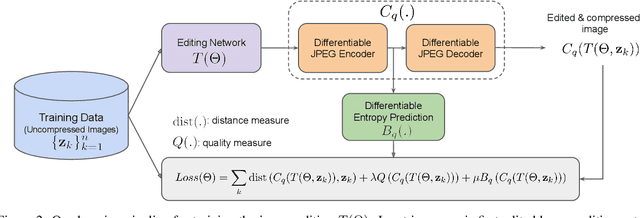
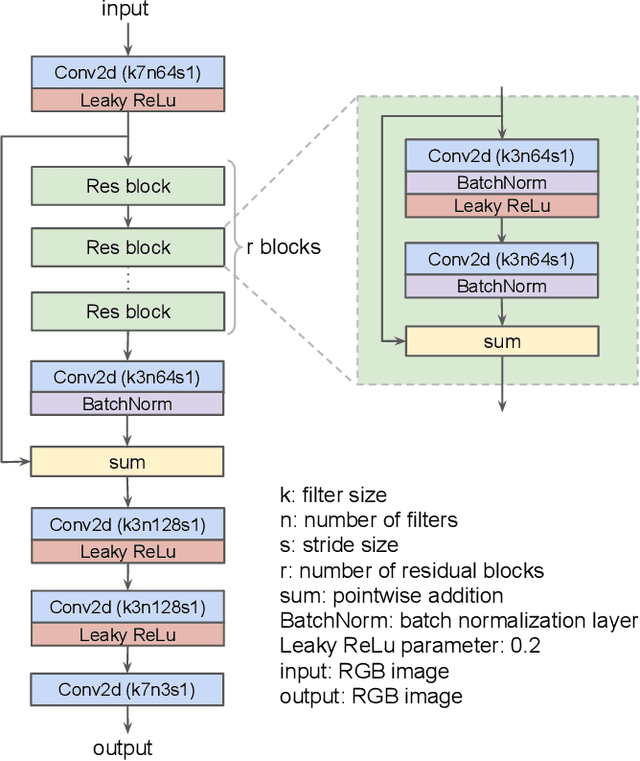

Abstract:Could we compress images via standard codecs while avoiding artifacts? The answer is obvious -- this is doable as long as the bit budget is generous enough. What if the allocated bit-rate for compression is insufficient? Then unfortunately, artifacts are a fact of life. Many attempts were made over the years to fight this phenomenon, with various degrees of success. In this work we aim to break the unholy connection between bit-rate and image quality, and propose a way to circumvent compression artifacts by pre-editing the incoming image and modifying its content to fit the given bits. We design this editing operation as a learned convolutional neural network, and formulate an optimization problem for its training. Our loss takes into account a proximity between the original image and the edited one, a bit-budget penalty over the proposed image, and a no-reference image quality measure for forcing the outcome to be visually pleasing. The proposed approach is demonstrated on the popular JPEG compression, showing savings in bits and/or improvements in visual quality, obtained with intricate editing effects.
Handheld Multi-Frame Super-Resolution
May 08, 2019



Abstract:Compared to DSLR cameras, smartphone cameras have smaller sensors, which limits their spatial resolution; smaller apertures, which limits their light gathering ability; and smaller pixels, which reduces their signal-to noise ratio. The use of color filter arrays (CFAs) requires demosaicing, which further degrades resolution. In this paper, we supplant the use of traditional demosaicing in single-frame and burst photography pipelines with a multiframe super-resolution algorithm that creates a complete RGB image directly from a burst of CFA raw images. We harness natural hand tremor, typical in handheld photography, to acquire a burst of raw frames with small offsets. These frames are then aligned and merged to form a single image with red, green, and blue values at every pixel site. This approach, which includes no explicit demosaicing step, serves to both increase image resolution and boost signal to noise ratio. Our algorithm is robust to challenging scene conditions: local motion, occlusion, or scene changes. It runs at 100 milliseconds per 12-megapixel RAW input burst frame on mass-produced mobile phones. Specifically, the algorithm is the basis of the Super-Res Zoom feature, as well as the default merge method in Night Sight mode (whether zooming or not) on Google's flagship phone.
 Add to Chrome
Add to Chrome Add to Firefox
Add to Firefox Add to Edge
Add to Edge